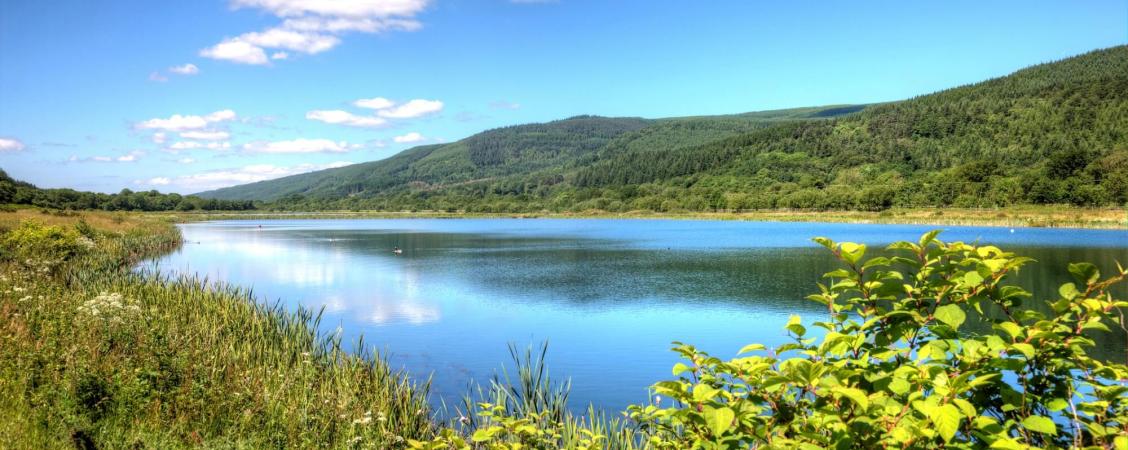
Rapid Hydro-Logic® Aquator modelling supports Dŵr Cymru Welsh Water’s priority drought plan
Following a summer of drought, Hydro-Logic® Aquator's rapid modelling of two water supply areas helped Dŵr Cymru Welsh Water create an urgent new Statutory Drought Plan.
Situation
The summer of 2018 resulted in hot, dry weather across much of England and Wales. Like most UK water utilities, Dŵr Cymru Welsh Water (DCWW) had been adjusting to and planning for the impacts of climate change, but the summer heatwave of 2018 led to unexpectedly significant drought conditions. In June 2018, Wales received just 24% of the average rainfall it would normally expect.
As a result, this placed pressure on the system and resulted in water supply assets and systems being used in different ways. Areas such as the Lleyn Harlech and Barmouth water resource zones in Gwynedd, North West Wales, were hit hard, with rivers and reservoirs such as Llyn Eiddew Mawr and Llyn Bodlyn put under strain.
The summer tourist season placed added demand on the system, and as water levels dropped local farmers faced difficulties with irrigation and water supplies for livestock. DCWW advised residents to cut water use, and spent an additional £1.5M each week to ensure consistency of supply.
Problem
While the existing Harlech and Barmouth areas were modelled independently in legacy modelling software, operational experiences from the 2018 drought indicated important interlinkages between the two systems.
DCWW recognised that the new operational experiences and the links between systems that had previously been considered separate and distinct meant that new models were required, combining the systems to give a more representative holistic view that more closely reflected plausible operational activity.
With a new Statutory Drought Plan an urgent priority, the water company needed to develop new models quickly. They identified the need for a fast-track modelling project to ensure that high-priority drought planning could proceed on schedule to ensure that they could adequately respond to future drought events in the region.
Solution
Although water companies are able to develop their own models, when work is complex, critical or urgent it is often beneficial to bring in specialist experts to ensure a rapid, reliable output.
As such DCWW engaged the Hydro International Data, Insight & Analysis team and engineering consultants Wood PLC, via their framework partnership, to run a four-week fast-track modelling project to update and replace the existing models in the legacy modelling software. Wood PLC provided the knowledge of existing models and legacy modelling software, while the consulting team provided the expertise with the Hydro-Logic® Aquator modelling platform to develop robust, efficient new models.
DCWW had previously selected Hydro-Logic® Aquator to replace its legacy water resources modelling software.
Outcome
The model build was completed on schedule, despite a later start to the project than had originally been anticipated, with final reporting outputs following shortly afterwards.
A new model was developed for further use and application by DCWW, and the resulting reporting outputs not only provided a robust model audit trail, they also used the expertise of the team on the operation of Aquator models to appropriately account for variances against the original model.
The Hydro International consulting team ensured that the resulting models were as accessible to DCWW on handover as possible, using best practice approaches in the writing of VBA custom code, displaying maps behind the schematic to make it geographically relevant, and setting up the model to allow individual zones to be run independently or in combination with each other.
A particularly important aspect of the project was the close and collaborative working relationship with DCWW, allowing the development of the model to be both well understood and for their operational knowledge to be directly applied in model development choices. As well as delivering the modelling project itself, these discussions added further value to DCWW by enhancing their own understanding, providing insights into improvements or solutions that could be made to their other models under development.
The supply capability of the system (expressed as deployable output), closely mirrored that of the original legacy model, but, recognising the wider value that such models provide, a great emphasis was placed on the nature of behavioral simulation to get to this result.
This was a crucially important element of the project, as this understanding allows models to stand up to stakeholder and regulatory scrutiny.
The combined Wood-HLS team used comparative plots of model behaviour to legacy models, with reasoning for the differences, not just for the final audit reports, but also for meetings with DCWW as part of the process.
Try Hydro-Logic® Aquator for free
Download a free trial version of the Hydro-Logic® Aquator software platform.




